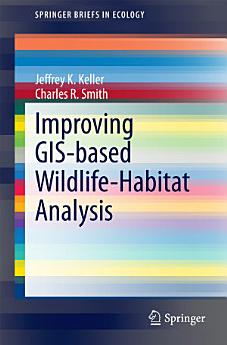Improving GIS-based Wildlife-Habitat Analysis
Jeffrey K. Keller · Charles R. Smith
okt 2014 · Springer
E-boek
132
Pagina's
reportBeoordelingen en reviews worden niet geverifieerd. Meer informatie
Over dit e-boek
Geographic Information Systems (GIS) provide a powerful tool for the investigation of species-habitat relationships and the development of wildlife management and conservation programs. However, the relative ease of data manipulation and analysis using GIS, associated landscape metrics packages, and sophisticated statistical tests may sometimes cause investigators to overlook important species-habitat functional relationships. Additionally, underlying assumptions of the study design or technology may have unrecognized consequences. This volume examines how initial researcher choices of image resolution, scale(s) of analysis, response and explanatory variables, and location and area of samples can influence analysis results, interpretation, predictive capability, and study-derived management prescriptions. Overall, most studies in this realm employ relatively low resolution imagery that allows neither identification nor accurate classification of habitat components. Additionally, the landscape metrics typically employed do not adequately quantify component spatial arrangement associated with species occupation. To address this latter issue, the authors introduce two novel landscape metrics that measure the functional size and location in the landscape of taxon-specific ‘solid’ and ‘edge’ habitat types. Keller and Smith conclude that investigators conducting GIS-based analyses of species-habitat relationships should more carefully 1) match the resolution of remotely sensed imagery to the scale of habitat functional relationships of the focal taxon, 2) identify attributes (explanatory variables) of habitat architecture, size, configuration, quality, and context that reflect the way the focal taxon uses the subset of the landscape it occupies, and 3) match the location and scale of habitat samples, whether GIS- or ground-based, to corresponding species’ detection locations and scales of habitat use.
Over de auteur
Jeffrey K. Keller is a professional restoration ecologist. Charles R. Smith is a senior research associate with Cornell’s Department of Natural Resources. He also holds an adjunct associate professorship in the graduate program in biodiversity, conservation, and policy in the Department of Biological Sciences at the State University of New York at Albany.
Dit e-boek beoordelen
Geef ons je mening.
Informatie over lezen
Smartphones en tablets
Installeer de Google Play Boeken-app voor Android en iPad/iPhone. De app wordt automatisch gesynchroniseerd met je account en met de app kun je online of offline lezen, waar je ook bent.
Laptops en computers
Via de webbrowser van je computer kun je luisteren naar audioboeken die je hebt gekocht op Google Play.
eReaders en andere apparaten
Als je wilt lezen op e-ink-apparaten zoals e-readers van Kobo, moet je een bestand downloaden en overzetten naar je apparaat. Volg de gedetailleerde instructies in het Helpcentrum om de bestanden over te zetten op ondersteunde e-readers.








